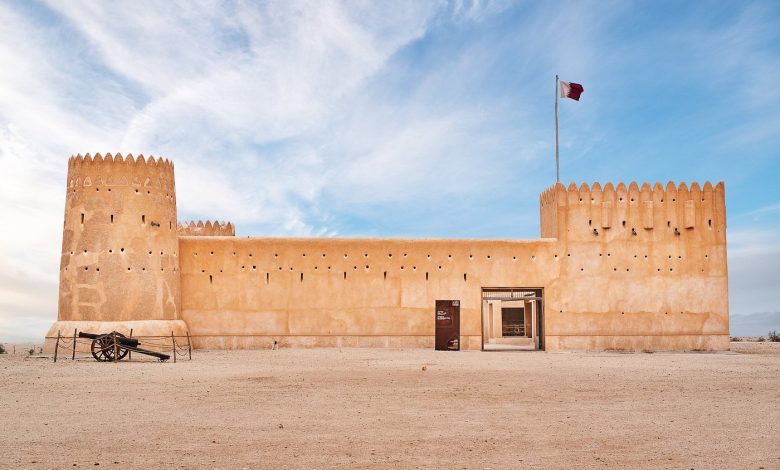All you need to know about Qatar’s AL-Zubarah Fort

85 kilometers northwest of Doha is where Al Zubarah, Qatar’s largest archaeological site, is located. This now-abandoned town was once a vibrant center of politics and culture with a commerce and pearl-based economy. Al Zubarah, one of the largest and best-preserved examples of a commercial town from the 18th to the 19th century in the Arabian Gulf, is a remarkable illustration of the creativity and inventiveness of Gulf Arabs. The Al Zubarah Fort, where a modern tourist center is located, is where most people arrive. We advise starting your journey here rather than at the nearby archaeological site.
Origin
Sheikh Abdullah bin Jassim Al Thani ordered the construction of Al Zubarah Fort in 1938 to monitor and safeguard Qatar’s northwestern shore. It was a component of a comprehensive defence system that governed the region’s freshwater and maritime resources, together with a number of forts along Qatar’s coastline. The fort’s architecture harkens back to previous elements that were typical of Arab and Gulf fortifications, such as pointed crenellations, a conventional style of roof construction, a mix of round and square corner towers, sloping walls, and a square ground plan. The fort was a military and police outpost up to 1986, and the southern wall of the structure received an addition. Since that time, the location has served as a museum and tourist destination. The fort has been restored to its former configuration after restorations including removing the contemporary addition. The fort that serves as a visitor center is now under continuous monitoring and repair by the Qatar Museums.
Arabic building style
The fort has stunning traditional Arabian architecture and one-meter-thick walls to keep off intruders and keep residents cool during the scorching months. Metal bars were used to fasten the timber windows, and sliding bolt locks were used to secure the wooden doors. Additionally, the ventilation holes that were present in the walls are clearly evident. No matter how hot the day is, if you look attentively at them, you can feel a refreshing wind.
The courtyard
The fort is a rectangular building with a sizable courtyard. The troops would congregate here. You can see the entire site from here as soon as you enter. Three circulars, one rectangle, and a tower can be found at each of the fort’s four corners. There are little exhibitions to examine on each side and tower.
Al Zubarah Fort’s well
The Al Zubarah fort well, which can reach a depth of up to ten meters, serves as a year-round source of clean drinking water. To reach the pure water, a hand-dug hole had to be made through hard Dammam limestone. To get drinking water in the past, a wooden bucket was dropped into the well. However, it has been securely barred and is entirely dry today.
Various exhibits
The plants and wildlife that flourished in Al Zubarah are displayed in the Hidden Beauty exhibition. An interactive table with circular plates that you can raise to show an image of a plant or animal fauna is located at the end of the area. Each plate offers information on that particular species. This exhibit provides an overview of the Qatar Islamic Archaeology and Heritage project, which was undertaken by Qatar Museums in collaboration with the University of Copenhagen. A team of experts excavated the heritage site as well as other locations in Qatar to learn more about the country’s rich history. You can learn more about the artifacts that early Qataris utilized on a daily basis at the Fragments of the Past exhibit, which is where the history of Qatar continues to be explored.






